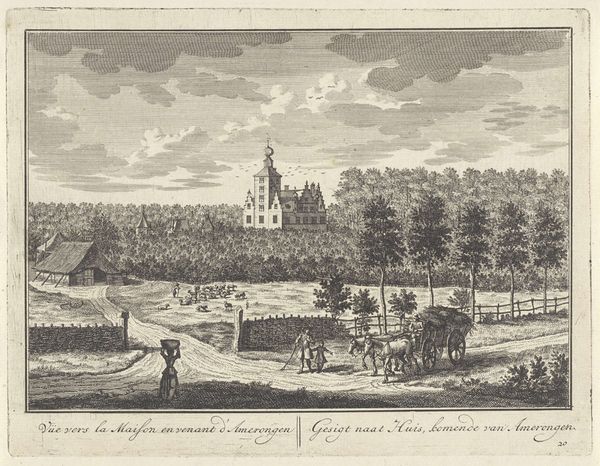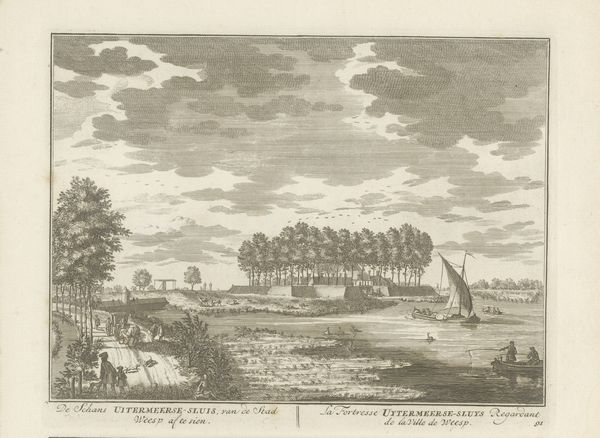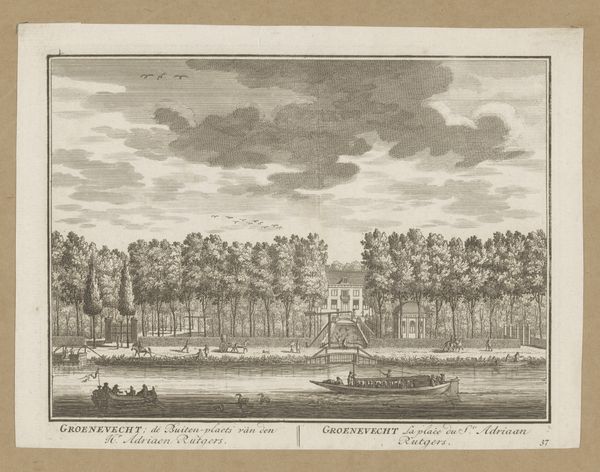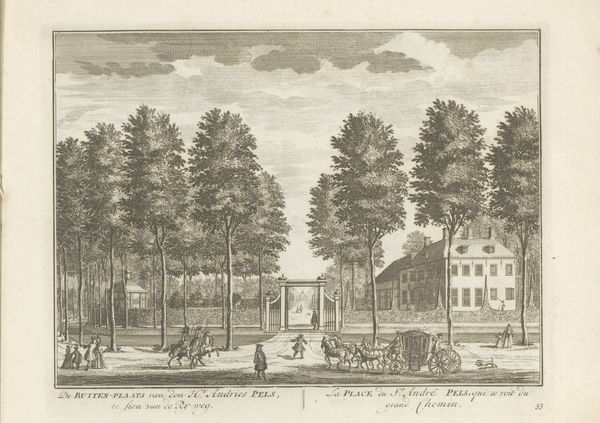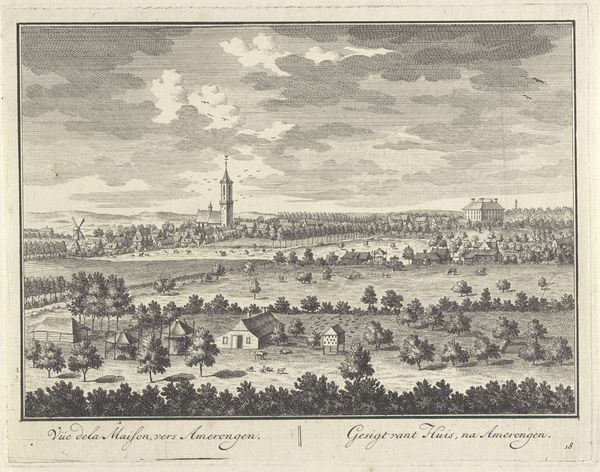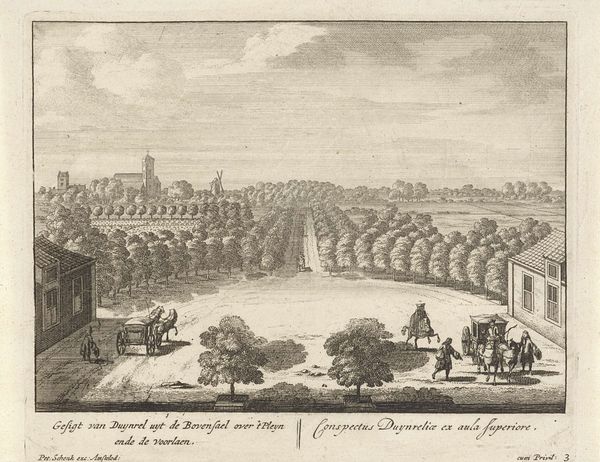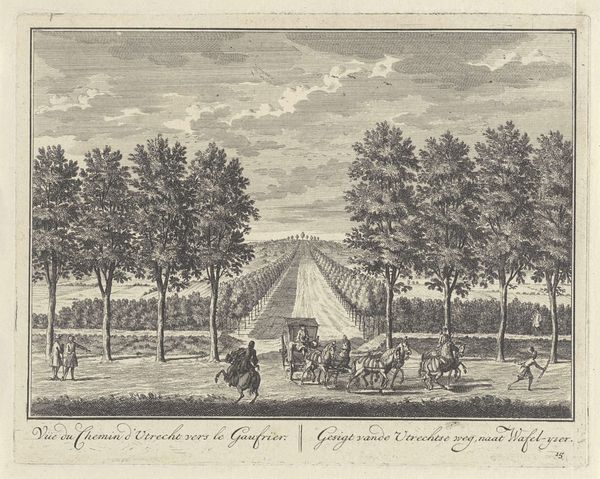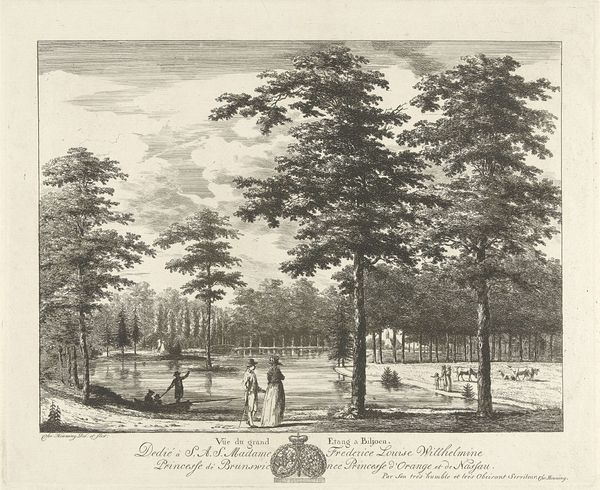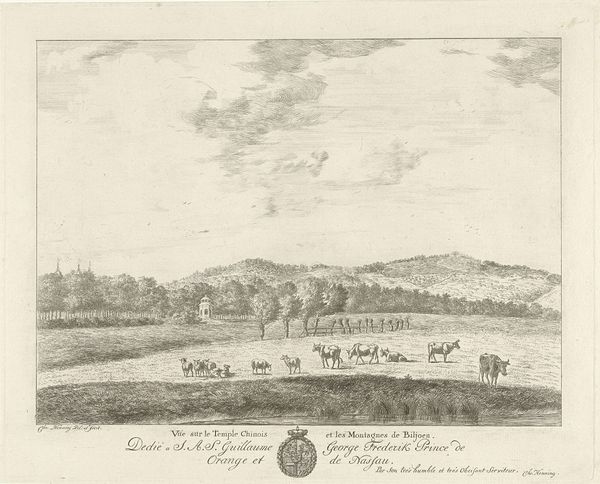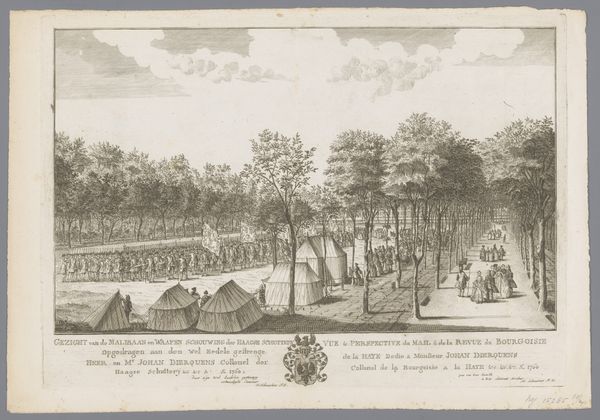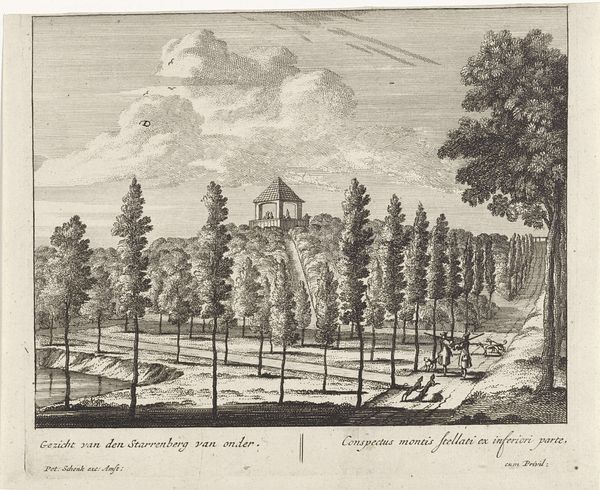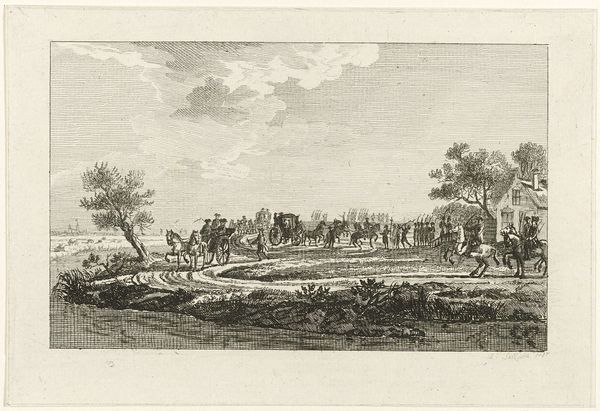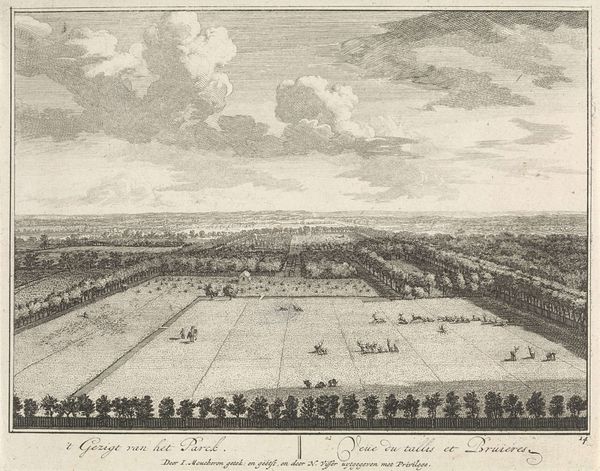
Gezicht vanaf het Wafelijzer naar Kasteel Zuilenstein en Amerongen 1682 - 1726
0:00
0:00
print, engraving
#
quirky sketch
#
dutch-golden-age
#
mechanical pen drawing
# print
#
pen sketch
#
old engraving style
#
landscape
#
personal sketchbook
#
sketchwork
#
pen-ink sketch
#
pen work
#
sketchbook drawing
#
cityscape
#
storyboard and sketchbook work
#
engraving
Dimensions: height 164 mm, width 210 mm
Copyright: Rijks Museum: Open Domain
Curator: This pen and ink sketch, "Gezicht vanaf het Wafelijzer naar Kasteel Zuilenstein en Amerongen," roughly translated to "View from the Waffle Iron to Zuilenstein Castle and Amerongen," offers a peek into the Dutch countryside sometime between 1682 and 1726. The artist is Daniël Stopendaal, and it currently resides in the Rijksmuseum. Editor: It's such a serene scene. The starkness of the medium somehow makes the landscape feel even more open, the receding road like a visual exhale. Curator: Absolutely. The rigid lines create almost a sense of hyper-order that wealthy landowners strived for and was thought to separate them from the wild chaos of untamed nature and life. I notice how the receding lines of trees draw the eye toward the horizon and reinforce power through perspective. Editor: I love how these formal elements frame an almost comical everyday moment. Look at that scattering of sheep! One seems to have entirely lost its way! Is that the Waffle Iron in the title a sort of watch house or viewing point? It's positioned perfectly for a voyeuristic scene. The little groupings of people, animals, even that lone rider… they feel like actors on a vast stage. Curator: Yes, that's exactly it. And this viewpoint showcases how country estates visually demonstrated power, a political ideology shaped in its image. The rigid geometry symbolizes humankind ordering the world into visibility from privileged viewing spots. Stopendaal reminds the elite that art has long bolstered social ideals, shaping and justifying existing beliefs by naturalizing cultural constructs through his artwork. Editor: It’s funny, isn’t it? How an image ostensibly of nature becomes, in actuality, a landscape of control. I see in it the aspirations of the powerful and how we might resist. Curator: It’s a constant negotiation between freedom and framework. The best landscapes leave you space to imagine and ponder life's many landscapes of power!
Comments
No comments
Be the first to comment and join the conversation on the ultimate creative platform.
